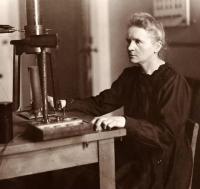| www.tmatlantic.com
Test & Soldering Equipment On-line Store |
|
D.E.V.I.C.E. (Wiki)Calculators Services |
|||||
Filter by first letter
|
Curie, Marie
Maria Sklodowska was born on November 7, 1867 in Warsaw. After leaving school, she worked as a governess for several years to enable her sister to receive medical education in France. Then Maria left for Paris and began to study chemistry and physics there. After graduating from the university Maria Sklodowska remained to teach and became the first woman teacher in the history of the Sorbonne. There she met her future husband and colleague Pierre Curie. The couple researched and studied uranium. At the beginning of the 20th century the Curies discovered a new substance – radium, and then polonium. Maria (or Marie, as she would be known in France) and Pierre Curie received the Nobel Prize in Physics for their outstanding achievements. Their plans included the creation of an institute of radioactivity. In 1906 Marie's husband tragically died and the researcher herself continued the family business of studying radium. In 1911 Marie Curie received the Nobel Prize in Chemistry and became the first woman to receive this honorary award twice. Shortly thereafter Curie became director of the Department of Fundamental Research and Medical Applications of Radioactivity at the Radium Institute (established by the University of Paris). During the First World War Marie Curie provided hospitals with portable X-ray machines and trained military doctors in radiology. In the post-war years she continued to work at the Radium Institute and published several monographs. Radiation research ultimately had a detrimental effect on Marie Curie's health. She died on July 4, 1934 from leukemia. |
|
Site mapPrivacy policyTerms of Use & Store PoliciesHow to BuyShippingPayment |

























